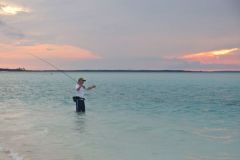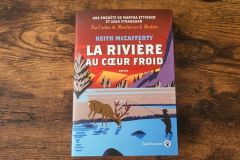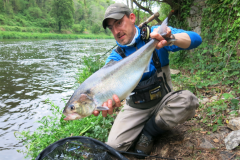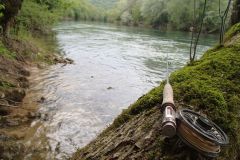Less than ideal conditions
This season, despite a rather wet winter, water levels in Brittany's rivers are rather low for the season. It rains, but the water doesn't stay. This has been an alarming observation for years. Is it the waterproofing of soils through the creation of large surfaces, housing estates and the like? Is it due to less regular rainfall? Is it the easterly and north-easterly winds, which we haven't had as frequently as in recent years?
In any case, the rivers don't hold water like they used to, and every year as a guide, I wonder how the season will go and whether our fish will have enough water to live properly!
Spring flows are important for triggering the migration of shad, which leave for the continental shelf to feed and return to freshwater to reproduce after 4 to 6 years, depending on sex.
For the moment, the returns are decent, with several hundred fish up, but we'll have to keep an eye on the figures released by the counting stations to know whether it's been a good year.
In recent years, between 1,500 and 2,500 large shad have returned to the Aulne. A pretty decent figure for this migratory fish, which is so exciting to pursue on the fly. With much better years in the early 2000s.
On the Blavet and smaller rivers in Brittany, there are no counts, and we don't know the exact figures except on the Elorn and Scorff rivers, when the fish pass through the counting station.
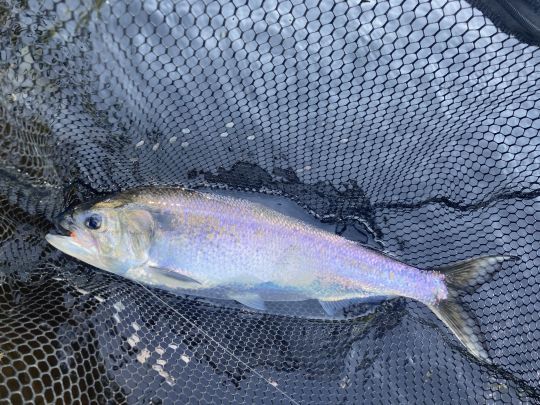
Fishing for an exciting migratory fish
Large shad or alosa alosa is an aggressive and powerful migratory fish. They range in size from 50 to nearly 70 cm. Females are always the largest specimens. They provide incredible sensations with their often violent strikes and intense, sometimes acrobatic battles.
Every angler needs to catch a shad once in his or her life, and some are lucky enough to be able to catch them every year, as I am, not only on canalised rivers where populations are highest, but also on smaller streams.
The technique is to trigger the aggressiveness of fish that are not feeding and are irritated by the repeated passage of flies or lures in flashy colors and small sizes (3-4 cm).
If the fish are there and you know how to make your fly evolve, it doesn't take long for the bites to come.
Knowing every spot in the department, I'm always happy to take a quick look at a few spots to take the "temperature" before taking my clients there, who come from all over France to fish for trout, shad (and before salmon, closed this year due to the drop in stocks nationally and worldwide), as well as sea bass and freshwater carnivores.
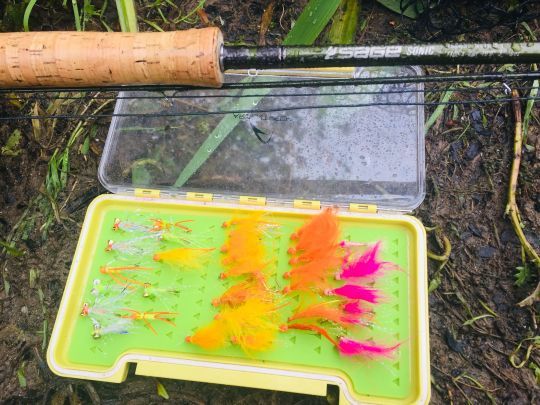
No sooner had I arrived on the spot than I saw a few porpoises. Indeed, shad often come to the surface and show their heads, then their backs and tails for reasons we don't know, like salmon, but it's certainly behavioral or to find their bearings in space. We're not sure.
In this case, it helps to spot them and know where to insist. You then need to be able to pass at the right speed and height to make the fish angry, so that they come and swat at the fly to chase it away from their new territory. Like all migratory species, these fish defend their space and are aggressive during their upstream phase.
Shad migrate upstream as high as they can, but often find themselves blocked by an obstacle, often linked to human activity (dams) or natural causes.

The first touches, and the first shad
Five minutes after arriving on the spot, I take a short, dry tap as shad know how to do and miss the first bite. Like every year, there's that little excitement of the first hits and the quest for the first migratory fish of the year.
I stay focused, cast my fly, animate it and four casts later, another touch intervenes, but this time the hooking is done at the right moment and I cast the first of the year.
My SAGE Sonic 10-foot silk 7 is fighting hard against the rushes. They're very fresh and have certainly just arrived, especially as the tidal coefficients these days are very high and must have pushed them up.
I stay as tense as possible because these fish have a knack for getting loose, whether it's during candles or because of rushes that go upstream and then downstream!
This one is well pricked and will be in my landing net after a few minutes. A relentless fight as exciting as ever! The landing net is an indispensable tool for shortening fights and quickly returning shad to the water. Shad are very fragile fish and must be preserved.
She is a beautiful female of very nice size. She must be 65 cm or more. I didn't measure her to get her back in the water as quickly as possible. Just as I was about to take a quick photo, she slipped out of my hands and into the current! Too bad!
I get back on station and cast again. After another unsuccessful cast, which is often the case especially when they don't take well, I hook another shad, slightly smaller than the previous one, but still a beautiful, fresh and combative female. Brilliant!
An acquaintance is at the water's edge and I take the opportunity to ask her to take my portrait to immortalize this beautiful catch. The next ones will go into the water without a photo to ensure their survival and that they can spawn and perpetuate the species!
I went to see two other spots, but to no avail. They were as always in this pit, which they love, but before long they'll be colonizing other spots and I'll be able to take other enthusiasts there.
So the season can get underway, and let's hope we get some water in May and June, because if we don't, we'll have a drought like in 2022!




